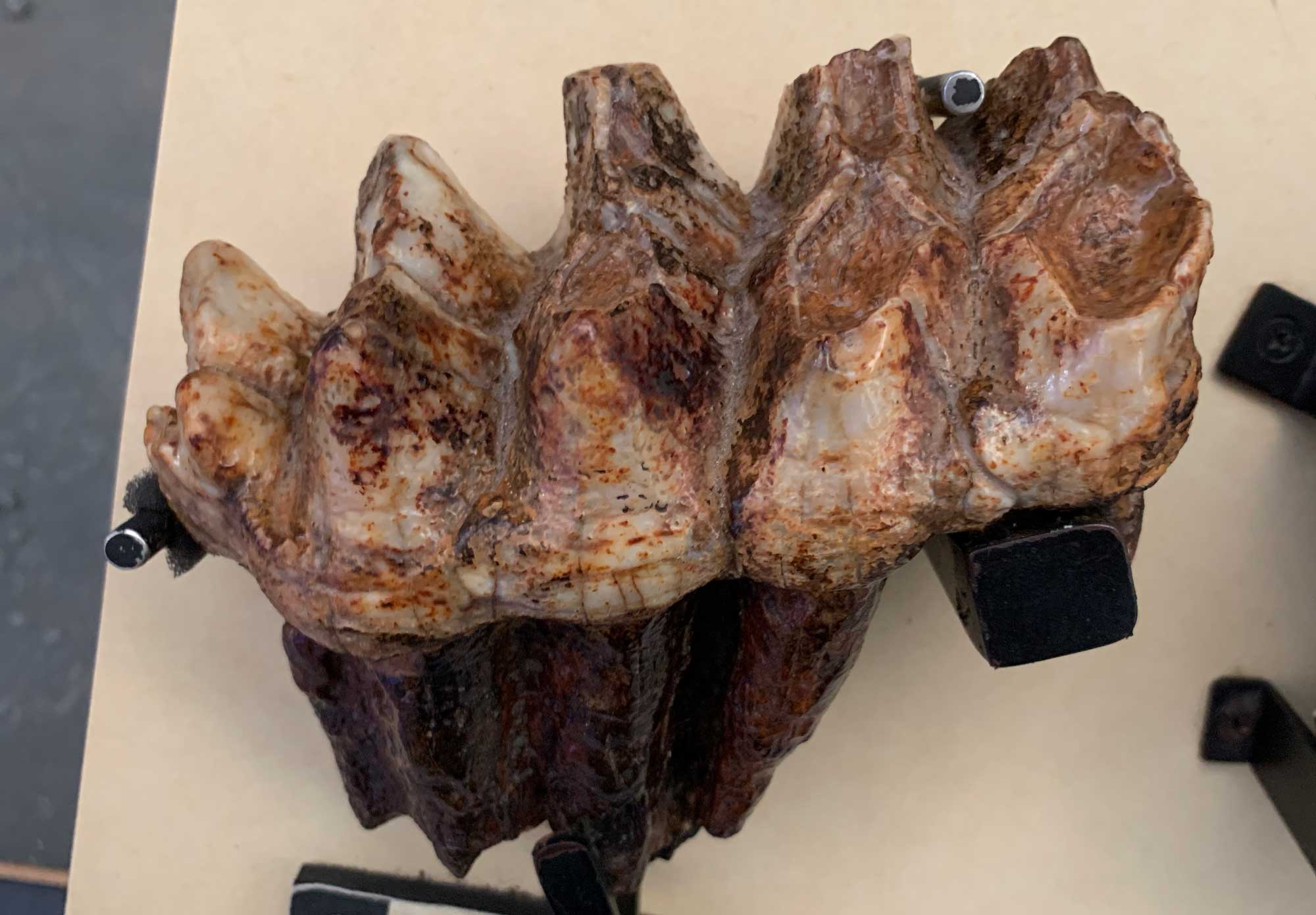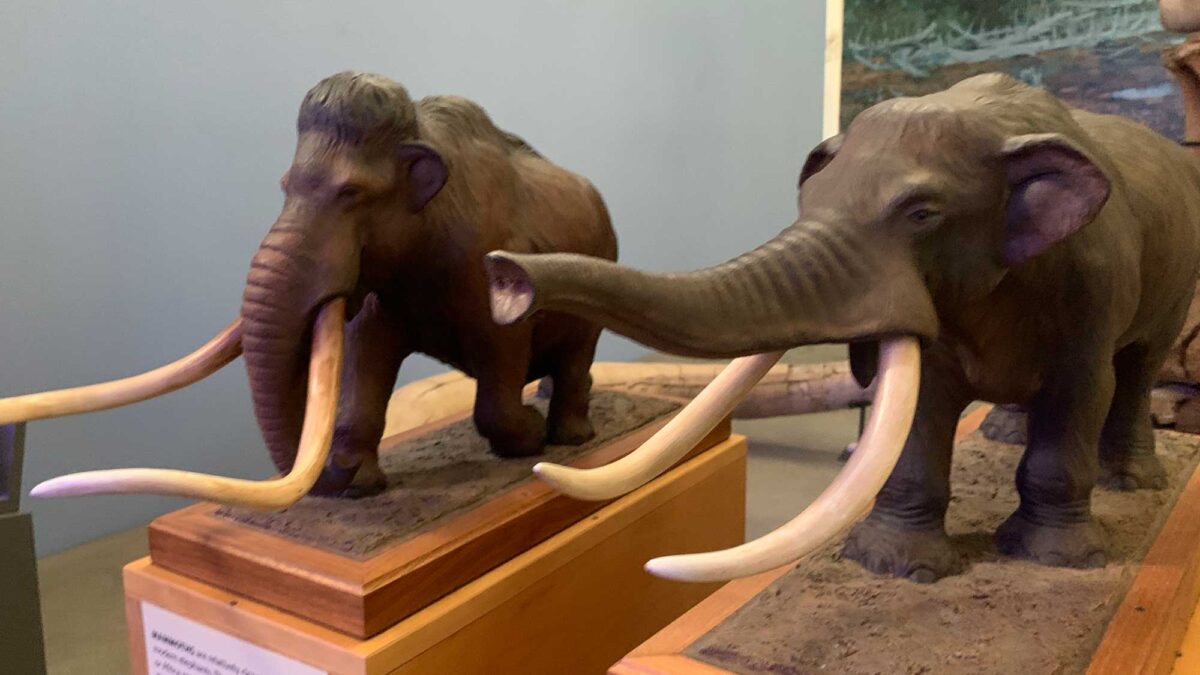Quick Answer
Mammoths and mastodons were distantly-related kinds of elephants that lived during the Pleistocene. Their teeth were very different and are the best feature for telling them apart.
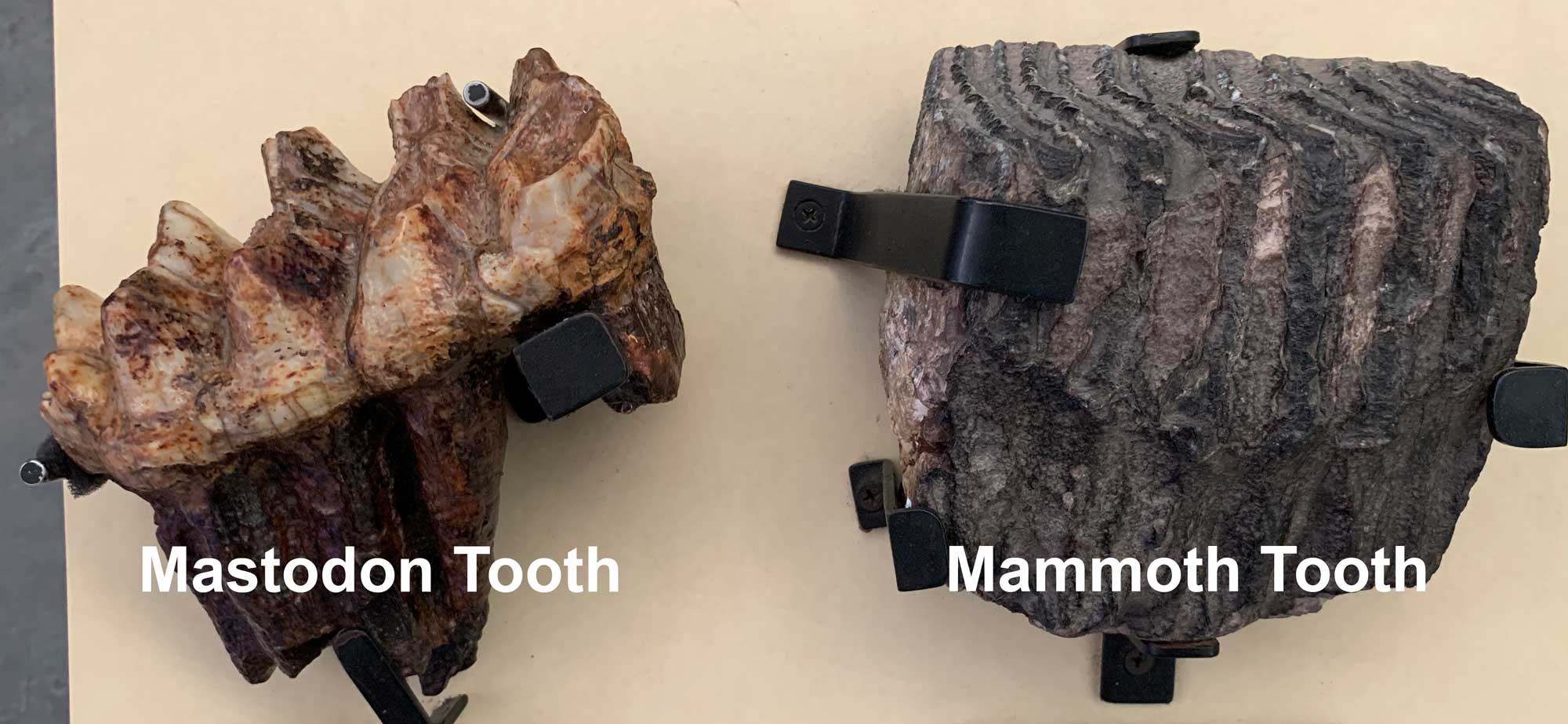
Mammoths and mastodons are extinct types of elephants (or, more technically, proboscideans) that are frequently confused. Both were common during the Ice Age of the Pleistocene Epoch, but they had different ecological preferences and are usually found separately as fossils.
In skeletal details, the quickest way to tell the difference between a mammoth and mastodon skeleton is by the teeth (see below). The teeth are indicative of the two species' ecological differences. Both mammoths and mastodons became extinct around 10,000 years ago.
Mammoths
Mammoths were close cousins of modern African and Asian elephants.
Compared with mastodons, mammoths were taller and thinner, with a high "domed" skull.
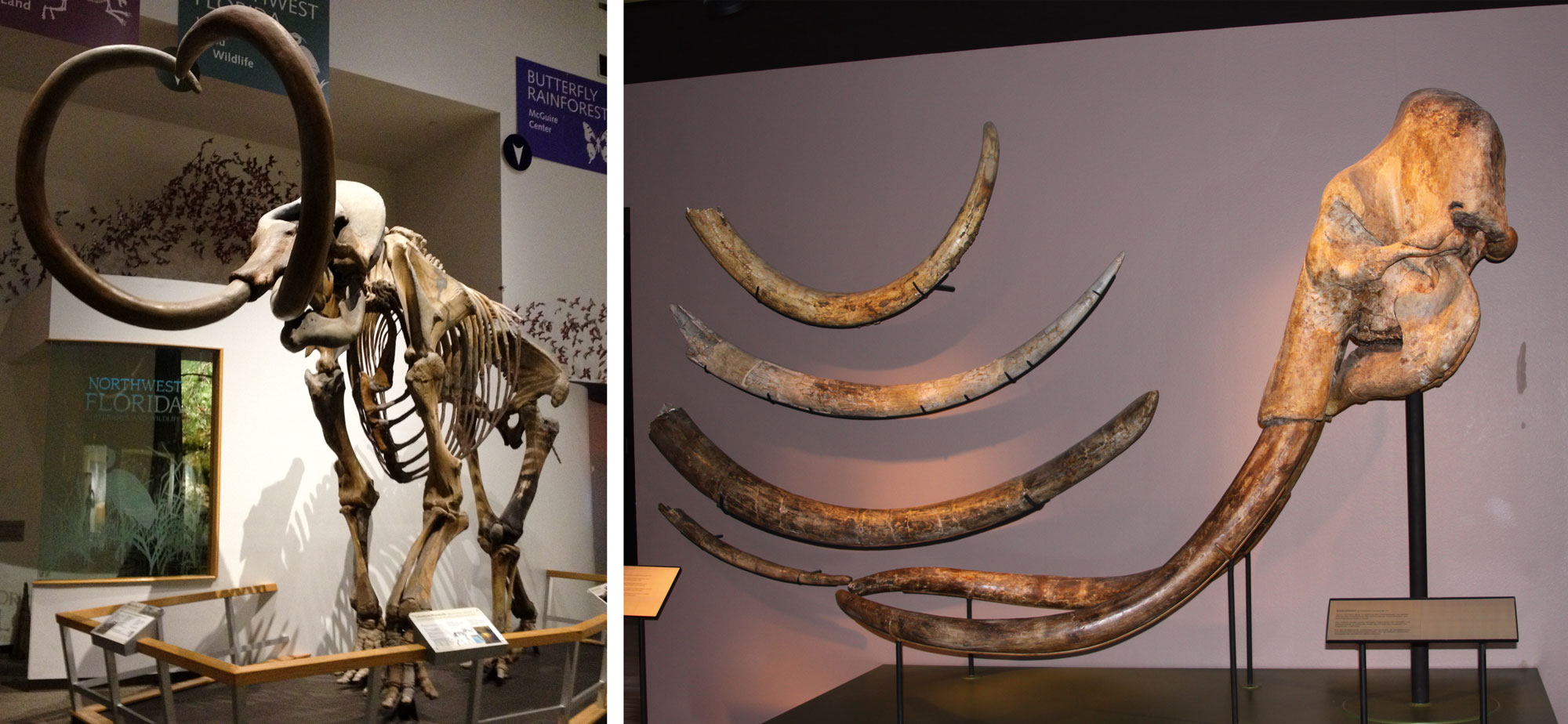
Mammoth Teeth
Mammoths had teeth with numerous parallel rows of low ridges, very similar to those of modern elephants. They preferred tough, silica-rich grasses. Their teeth were therefore suitable for grinding.

Left: Mammoth tooth; note the parallel rows of low ridges. Right: Modern African elephant teeth; note the similarity of the teeth to those of the mammoth. Both specimens are on display at the Museum of the Earth, Ithaca, New York. Both photographs by Jonathan R. Hendricks.
Mastodons
Mastodons are distant relatives of modern elephants and mammoths. They are a separate evolutionary branch of proboscideans that branched off from the modern elephant line during the Miocene epoch.
Compared with mammoths, mastodons have a shorter, stockier build and longer body.
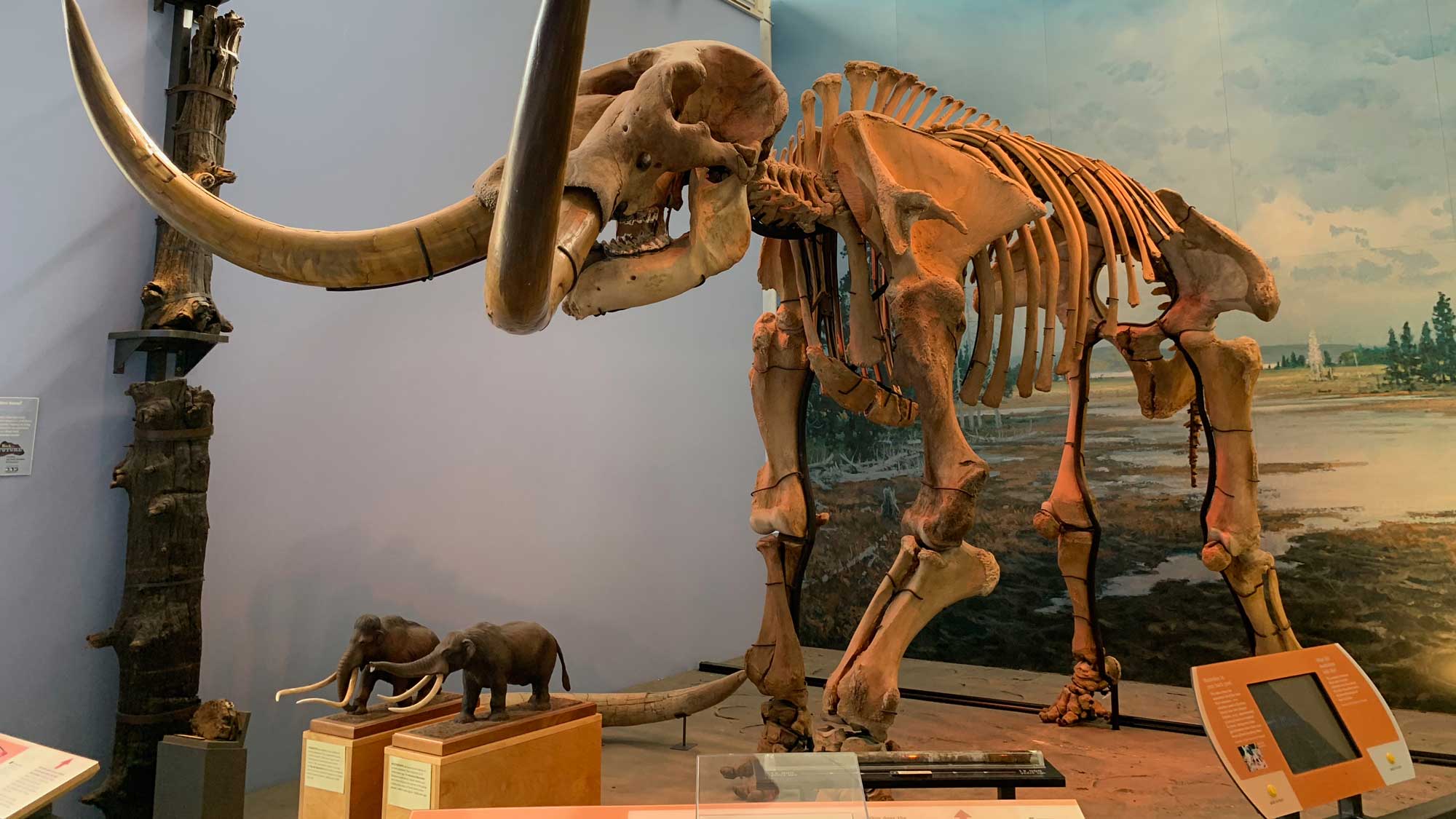
Mastodon Teeth
Mastodons have teeth with cone-shaped ridges, a bit like the bottom of an egg carton. They preferred to bite off twigs of brush and trees. Their teeth were therefore adapted for cutting.
